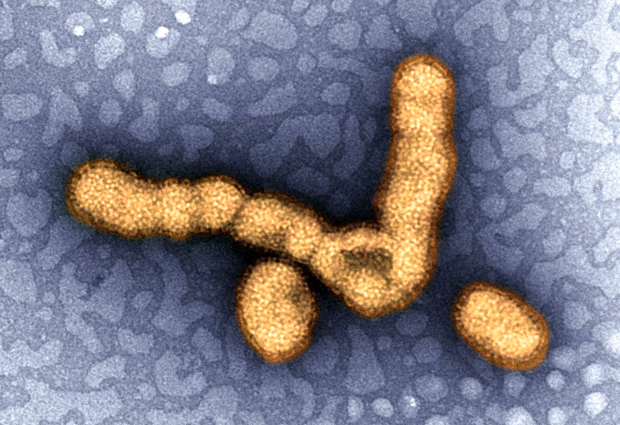How flu steals your RNA
Close interaction of influenza and host cell machineries is essential for the virus to make the cell produce viral proteins

New work by EMBL scientists published this week in Nature explains how the influenza virus’ transcription machine interacts with its counterpart in the host cell, offering new possibilities for anti-viral drug design.
“We’ve uncovered the details of a mechanism that’s common to all influenza strains, so we believe this could be a good target for developing new flu drugs,” says EMBL’s Stephen Cusack, who led the work.
The influenza virus poses a serious health threat to groups including the elderly, pregnant women, the very young and those with compromised immune systems. Vaccination only offers protection against certain strains and is therefore not always effective, particularly against completely new strains such as the one that arose during the pandemic of 2009. Novel drugs that could be used to prevent or treat any influenza infection are therefore highly desirable.
Once inside our cells, the flu virus’s transcription machine – called the flu polymerase – needs to convert the virus’ genetic material into a form called messenger RNA that can be used to make viral proteins. The viral polymerase doesn’t have all the tools it needs to complete this process, so to accomplish the job it has to ‘steal’ stretches of host cell RNA, which are produced by its counterpart, the human polymerase. The EMBL scientists found that flu polymerase binds to part of the human polymerase, enabling it to sneak in and steal the RNA material it requires.

Using the X-rays produced at the European Synchrotron Radiation Facility on the EPN campus in Grenoble, the EMBL scientists were able to determine precisely how the two polymerases bind to each other. This enabled them to make changes in the viral polymerase that would disrupt this binding.
“Our experiments show that when the binding is disrupted, the flu polymerase is unable to steal the RNA it needs from the host polymerase; it’s stopped in its tracks,” explains Maria Lukarska, a PhD student on the project. “It appears that binding of the flu polymerase to the host polymerase is essential for proliferation of the virus.”
The research focused initially on polymerase from a flu strain that only infect bats. Subsequent experiments in collaboration with scientists from the Pasteur Institute in Paris confirmed that preventing the polymerase from flu strains that infect humans from binding to the human polymerase also inhibited viral replication in human cells. Since this mechanism is found in all flu strains, the scientists hope these results will stimulate the development of novel influenza drugs targeting this essential interaction.



